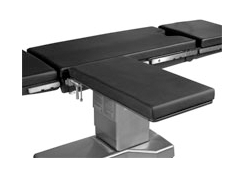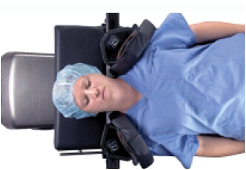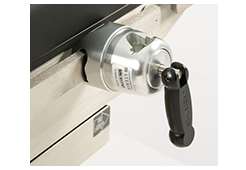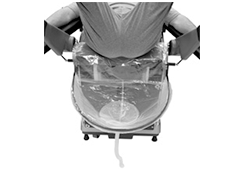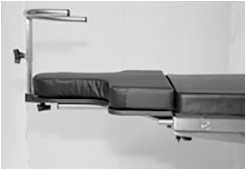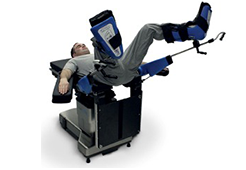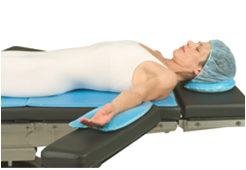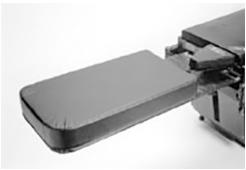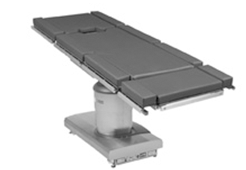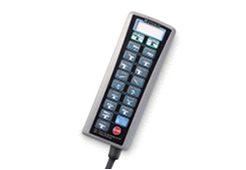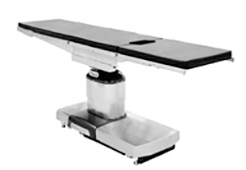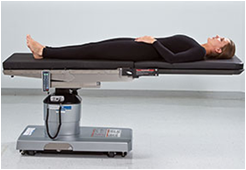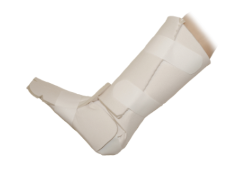Knowledge Center
March 4, 2019
Types of Surgical Table Accessories
SURGICAL TABLE ACCESSORIES BY FUNCTION
Arm Supports
An arm support, also known as an armboard, attaches to a general or specialty surgical table by means of clamps or posts. Arm supports provide support for proper, anatomical posturing appropriate for the patient and procedure.
Body Restraints
Body restraints are used to secure a patient during extreme surgical table articulations and patient positioning. A body restraint may be used in Trendelenburg, Reverse Trendelenburg, Lateral, Prone, Supine, or Semi-Fowler's positions during a procedure.
Clamps & Sockets
Accessory clamps and sockets are used to attach and position a surgical table accessory such as an arm support or leg support.
Fluid Collection System
Fluid collection accessories are often used in urological surgeries, such as cystoscopic or hysteroscopic procedures. A fluid collection system typically includes a flexible drape support and fluid collection bag that attaches to the end of the surgical table seat section or urology extensions using clamps.
Head Rests
A head rest is used during a surgical procedure to support the patient's head. Head rests may assist with Supine, Prone, and Lateral positioning for general, ophthalmology, otolaryngology, neurology and other surgical specialty applications. Headrests are typically attached to either end of the surgical table.
Leg Supports
Leg supports and leg positioners assist with patient posturing of the lower extremities, including lithotomy, split leg and reverse Trendelenburg positions.
Pad Positioners
Pad positioners are often used as a supplement to tabletop pads to assist in proper patient positioning. Pad positioners can provide stability and pressure management to the patient during the procedure.
A patient transfer board supports a patient's legs during transfer to and from the surgical table, before or after a procedure. A patient transfer board can attach to the end of an operating table.
Side Extensions
Side extensions, also known as width extensions or bariatric extensions, are modular extensions built to clamp onto the sides of the surgical table to provide extra width to support bariatric patients during an operation or procedure.
Table Operating Controls
Table controls such as surgeon palm controls, anesthesia hand controls and foot controls are used to articulate the table sections for various types of surgical procedures. A hand control may feature command buttons that display the various table positions for one-touch articulation.
Tabletop Pads
Table pads for surgical tables are designed to provide pressure management for patient comfort and prevention against pressure ulcers. Tabletop pads are often available in a variety of thicknesses and materials depending on the patient need.
X-Ray Tops
X-Ray tops are designed to facilitate improved imaging during a procedure. X-ray tops are radiolucent and are typically removable so that they can be moved during a surgical procedure where x-ray imaging is required.
Disposable Surgical Accessories
Disposable surgical accessories may range from surgical face masks to fluid collection system bags. Disposable, single-use surgical accessories are designed for use during a procedure and disposed of following the procedure.
SURGICAL TABLE ACCESSORIES BY SURGICAL PROCEDURE
Anesthesia
The use of anesthesia is common in many surgical procedures. Anesthesia intubation may require the use of an anesthesia armboard and ether screen, as well as patient positioning considerations. An anesthesia armboard supports the patient's arm for administration of anesthesia through intravenous (IV) fluids. The purpose of an ether screen, also known as an anesthesia screen, is to support a surgical drape to separate the surgical site area from the anesthesia field to reduce the risk of contamination.
Bariatric
The purpose of a bariatric procedure is to help a patient lose weight. The lithotomy position in reverse Trendelenburg position is commonly used for bariatric surgery. Split leg positioners are often used in a bariatric surgery, as they provide mid-line access to the patient with independent controls for full abduction/adduction as well as high and low lithotomy positioning.1 Other table accessories used in bariatric procedures may include a bariatric fluid collection system, foot extension, table extenders and knee restraint straps.
Neurology
A neurological procedure involves operating on the nervous system, specifically the brain and spinal cord. A beach chair may be used during neurosurgery for optimal patient positioning, as well as a disposable surgical face mask or chin strap to hold the patient's head in place during the procedure. Other table accessories common in neurological procedures include head positioners and Eye-ENT-Neuro accessory attachments.
Ophthalmic/ENT
An ophthalmic procedure is one that is performed on a patient's eye(s), while an ENT (earn, nose and throat) procedure is performed on the head and neck, typically involving the ear, nose and throat. This type of procedure may require a head rest such as an eye-ENT-neuro headrest adaptor.
General Orthopedics
Orthopedic procedures are done to treat and correct issues to the musculoskeletal system, including its articulations and associated structures.2 In orthopedic surgery, surgical table attachments may be used for traction of lower extremities. Some procedures may require a beach chair for Fowler's position.
Pediatric
Pediatric surgery is a surgical procedure performed on infants, children, and adolescents. Surgical table accessories that may be used in a pediatric surgical procedure include hip spica assembly for body casting purposes and a perineal post for orthopedic procedures in the supine position.
Urology
A urologic procedure is surgery performed on the urinary tract. Surgical table accessories such as stirrups, split-leg positioners and well leg-holders are commonly used to support a patient's legs during a procedure.
Vascular
A vascular surgery is performed on arteries, veins and lymphatic system. A catheter extension may be used during a vascular procedure to provide a sterile surface for surgical instruments, as well as radial AV fistula board for fistula repair, patient safety straps and siderail adaptors.
References
Knowledge Center Category List
| FOLLOW US | |
|---|---|
|
|
|
|
|
|
|
|
|
|
|
|

